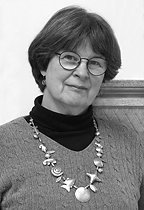Kali recently posted this picture of her beautiful March
BJP piece, called
Dancer.

She wrote:
The first thing I learned is that, no matter how many different colors of beads you’ve got, it’s never enough. As a painter, I’m used to mixing my own colors, and it’s a bit tougher with beads. Next time, though, I’m going to try mixing some bead soups to supplement my color palette.
Like Kali, if you're working with glass beads, you'll soon learn that there are only so many colors and those you have can't be mixed like paint. Even the
Delica line, which has by far the most colors, is limited in some areas. And, for bead embroidery, Delicas are less than wonderful because of their large holes and tubular shape.
When you need a color you don't have, you might try changing the appearance of the color with the thread color. For example, if you have transparent yellow beads and you want them to appear lime, you can stitch them with green thread. This only works with transparent beads.
Here's another way to "blend colors" that works with any beads (matte, opaque, transparent). I discovered it 25 years ago when my
bead thing was making multiple strand necklaces such as the one below. (Note, all the pictures in this post can be clicked-to-enlarge so you can really see the details.)

Notice how this is a red and black necklace, yet in the center of the necklace the red and black blend together making a smooth transition from one color to the other. The chart below shows the basic technique for accomplishing a blend between two colors (click to enlarge).

The pattern is: 5B, 1T, 4B, 1T, 3B, 1T, 2B, 1T, 1B, 2T, 1B, 3T, 1B, 4T, 1B, 5T. This variation of the pattern takes 36 beads to go from one to the other color. But it can be done with more or less. For example, the center section of the pattern only takes 14 beads (3B, 1T, 2B, 1T, 1B, 2T, 1B, 3T) to achieve the transition. While one could make a random blend, I often use a variation of this pattern.
Let's look at the red/black necklace in detail. Below is how the strands look before attaching the clasp.

And here is a detail showing just the center part where the colors are blended. By changing where the blend happens in each strand, I also achieve a vertical blend from strand to strand.

Below is the red side of the necklace. Notice there are no black beads in the upper part of it. I tried, but they were such a strong contrast in value that they made the eye go right there. I wanted the eye to come to the center of the necklace and enjoy the blending of the two colors.

Below is the black side of the necklace. Here I have put some red beads in with the black because without them it seemed unbalanced in value, too dark.

And below is a detail showing how the center of the necklace looks when worn.

I've used this technique in many multiple strand necklaces over the years and have always liked how it looks. When I began stitching beads on cloth, I often needed colors I didn't have or that don't exist. Could I use the successful stringing blend for my bead embroidery?

Yes! Above is my
November BJP (2008-9). Wanting to bead a fairly realistic butterfly, I needed to blend the colors, especially on the edges of the wing and where the wing meets the body.

By using backstitch and changing bead colors in a similar way to the chart above, I was able get the look I wanted. When you backstitch several lines of beads next to each other that all have color changes in them, you can create a beautiful blended look. I also blended colors in the short stacks that make the body of the butterfly.

For my
April BJP (2008-9), I used this method to blend colors in the waterfall and flowing creek water.

Above is a closer look at the water. It's actually only 3 colors (white, clear and smokey topaz). I used a dark brown thread color where I wanted it darker and white thread for the lighter areas. Plus I blended the colors in each line of beads, similar to the pattern shown on the chart above.

For the skunk cabbage, I used a different method for blending. Again using backstitch, I stitched a line of beads in one color, a different color next to that, and a third color
in the ditch, on top of the other two lines. This gave both texture and a subtle shift in color to stems, leaves and flower. I've marked the places where I used this method with white arrows.

Below is a detail picture showing one of the other skunk cabbages.

I've probably only scratched the surface of what is possible in the color blending department. If some of you have found other ways, I'd love to read about it on your blog!
FYII designed the red/black necklace based on colors in a Japanese kimono as a project for
Margie Deeb's book,
The Beader's Color Palette. See pages 91-93 for step-by-step instructions how to make it. Also, if anybody is interested, I might be willing to sell
Kimono Necklace.
I also designed several other pieces for Margie's book as projects or to illustrate specific color palettes. Two of them also involve color blending: pages 55 and 163.
If you don't have this book and have any interest in expanding your color comfort zone, Margie's book is a must have... at least check it out from your local library!








































